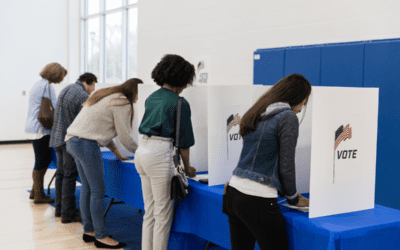
Living with diabetes has become unaffordable. Wisconsin’s governor says the state can’t afford to pass up another chance to help diabetics struggling to stay afloat.
Gov. Tony Evers’ proposal to cap insulin copays at $35 gives legislative Republicans an opportunity to create a bipartisan win-win in an election year, after continuously rejecting previous proposals that would also cut taxes and put a record $5 billion budget surplus to work.
The American Diabetes Association reports 439,000 adults in Wisconsin have diagnosed diabetes, another 135,000 individuals may have diabetes but don’t know it, and 1.6 million Wisconsinites have prediabetes. One in four insulin users said cost impacted their use of the drug that keeps their blood sugar in a healthy range—with people often rationing their medicine, compromising their health and risking serious health consequences, including death. The Governor’s Task Force on Reducing Prescription Drug Prices recommended statutorily limiting the co-pay an insurer can charge for a month’s supply of insulin, providing immediate financial relief.
Melissa Burazin is no stranger to the expense of living with diabetes. She was diagnosed with Type 1, and the struggle to afford insulin has become a part of her life journey.
“I became diabetic when I was about 12 years old,” Burazin, now 33, said. “I was really sick for a long time and didn’t know what was wrong. I went to get blood work done and they called and said we had to go back to the hospital right away because my blood sugar was so high. I stayed in the hospital for a couple of weeks where they taught me how to live my new life. I don’t remember my life before diabetes.”
As a child, Burazin’s only focus was to manage the disease but once she reached adulthood, she was removed from her parents’ insurance.
“Twenty years ago, when I was first diagnosed, insulin was less than $100 a vile,” said Burazin. “Now that same insulin is almost $500 a vile.”
The price of insulin nearly tripled between 2002 and 2013, according to the American Diabetes Association, and the trend upward has made affording this life-saving medication even more challenging for millions of diabetics.
Evers and legislative Democrats have tried multiple times to convince Republicans controlling the Assembly and Senate to embrace an insulin price cap—a $100 cap was proposed in 2019 and $50 in 2021. Similar efforts in Congress have also fallen short—with an effort to include a $35 cap on private insurance plans removed from the Inflation Reduction Act because of opposition from most Republicans including Sen. Ron Johnson.
“When I first moved to Wisconsin, I didn’t have insurance,” said Burazin. The only thing that saved me was that I had a baby and got on state insurance. But after a few years, I no longer qualified.”
That’s when reality set in. She was now a mother and staying healthy was a top priority. Desperate to find insulin however or wherever she could, Burazin turned to social media.
“That was the scariest part because I didn’t have insurance through my job,” she said. “I was just a waitress. I started to reach out on Facebook and diabetic forums, asking people if they had any extra insulin, or knew anyone who did.”
Burazin spent the next several years using social media platforms to acquire the insulin needed for her survival, as well as paying out of pocket whenever she could afford to.
“Luckily I found out about a program called Lilly Cares,” said Burazin. “If it wasn’t for that I’d be dead.”
Lilly Cares is a non-profit charitable organization that provides free prescribed medications to qualifying patients. Over the past 20 years, the organization has helped provide medication for more than one million diabetics with financial need in the US.
“All I can think of is the children out there with parents who are middle class, who make too much money to be on state insurance, but not enough to afford their kids’ insulin, blood sugar meters, and strips which are also ridiculously priced,” said Burazin.
In this last year, Burazin met Chyanne Clopper, who is also a Type 1 diabetic. Clopper was first diagnosed with the disease in 1999 at age 2.
“I’ve never met anyone other than myself, personally, who was type 1 diabetic, and then Chyanne rolls in and we bonded.’’ said Burazin.
The two met at their current workplace and instantly connected. Not only have they become best friends, but they also have the benefit of relying on each other for insulin when necessary.
“I’m super grateful we have each other,” said Burazin. “I know if anything ever happens and I need emergency insulin, I can go to her and vice versa.”
The two have borrowed insulin from one another on several occasions, which relieves a bit of pressure during times of uncertainty.
“My struggle with affording insulin is more recent because I turn 26 this year and will get cut off my parents’ insurance,” said Clopper. “I’m not going to be able to afford it.”
Burazin encouraged Clopper to also apply for Lilly Cares.
“Evers’ $35 co-pay cap would save so many lives,” Burazin said.
In Wisconsin, diagnosed diabetes costs an estimated $5.5 billion in health care costs each year.
As of July, at least 21 states have passed legislation to implement an insulin copay cap, including Wisconsin’s neighbors in Illinois and Minnesota. While Evers has put a price cap in his new tax cut plan, Republicans have said they have no intention of returning to the capitol until January—leaving $5 billion sitting unused while diabetics like Burazin and Clopper try to get by.

Opinion: Many to thank in fair maps victory for Wisconsinites
On February 19, 2024, Governor Tony Evers signed into law new and fair state legislative maps, bringing hope for an end to over a decade of...

Opinion: Empowering educators: A call for negotiation rights in Wisconsin
This week marks “Public Schools Week,” highlighting the dedication of teachers, paras, custodians, secretaries and others who collaborate with...

Op-ed: Trump’s journey from hosting The Apprentice to being the biggest loser
Leading up to the 2016 election, Donald Trump crafted an image of himself as a successful businessman and a winner. But in reality, Trump has a long...

Not just abortion: IVF ruling next phase in the right’s war on reproductive freedom
Nearly two years after the US Supreme Court overturned Roe v. Wade, another court is using that ruling to go after one of the anti-abortion right’s...





